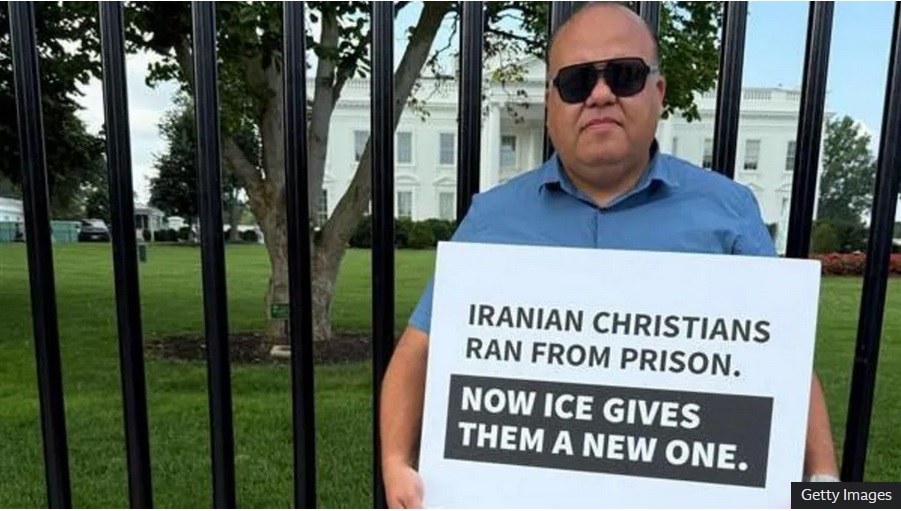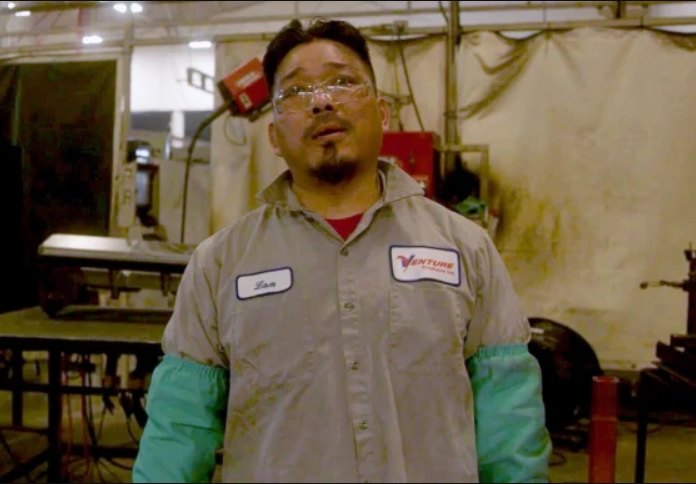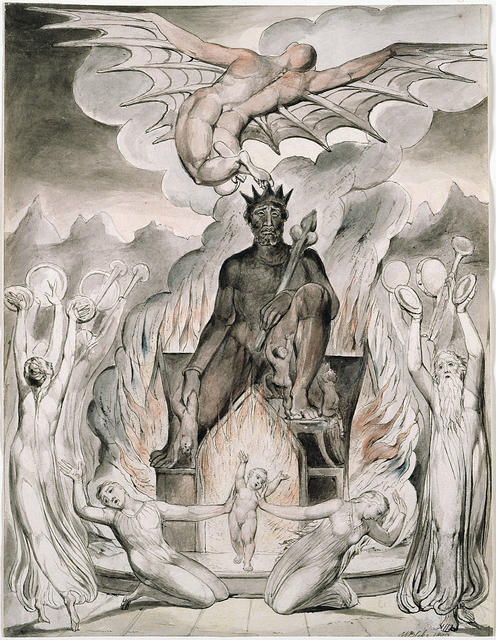by Brian Shilhavy
Editor, Health Impact News
The current corrupt Trump Administration continues to round up what they call “criminal illegal aliens” all across the country, put them in ICE detention concentration camps, and deport them as quickly as possible without due process of law.
While the MAGA crowd supports these mass deportations, others have done real investigative reporting to document just who these people are who are being detained and then deported, and it has been shown that the vast majority of these people have no criminal backgrounds, and many of them are actually here legally with visas, Green Cards, and some of them are even U.S. citizens, just with the wrong color of skin.
The BBC published an article this week looking at one group of people living in the U.S. who are being deported, Iranian Christians, many of whom came here as refugees to escape persecution in Iran from Muslims.
Converting to a religion from Islam is against the law in many Muslim countries, with new converts being arrested and put in prison, if not worse.
From the BBC:
Christian converts are among the Iranians being sent home from US
Excerpts:
One Monday in mid-October, after a year in US immigration detention, officers arrived unannounced at Majid’s cell in Texas.
They told him simply to “pack up” – that he was being moved – even though an immigration judge had already granted him protection from removal five months ago. Shackled at the wrists, waist and ankles, he was driven through the night to a military airfield in Louisiana.
Majid – not his real name – had fled Iran for the US in October 2024, after repeated detentions and alleged torture, first because of his involvement in the Mahsa Amini protests, and later because of his conversion to Christianity.
When US officials forced him to board a plane carrying more than 150 deportees heading to Managua, Nicaragua, he remembers being the only non–Latin American on the plane.
Hours later, the flight landed and officials handcuffed him, denied his request for asylum and directed him onto an itinerary routing him through Venezuela and Turkey toward Iran – a journey he understood as a forced return.
He is one of several Iranian Christian converts who spoke to the BBC – most anonymously out of fear for relatives back home – whose asylum claims have been rejected in the past year.
Their experiences run contrast to other elements of US foreign policy, as President Trump publicly laments the plight of Christian persecutions abroad, threatening to send troops into Nigeria “guns a-blazing” if its government “continues to allow the killing of Christians“.
As the US continues its crackdown on illegal immigration, which was a central plank of Trump’s winning re-election campaign, it has made unprecedented changes to its policy towards Iranian asylum seekers.
In late September, authorities arranged a chartered flight to Iran via Qatar – the first of its kind in decades, given the absence of diplomatic ties and Iran’s human-rights record.
The flight represented an unusual example of cooperation between Iran and the US.
Dozens of Iranians were placed on the flight, reportedly in shackles. One deportee, Sina, later described armed guards escorting passengers on the Qatar–Tehran leg. On arrival, they were questioned about their time in the US and their religious activities but were not immediately arrested, he said in a video, which was posted on a Farsi-language YouTube channel.
Among the passengers was the wife of Ali, an Iranian Christian convert now living in the US. She has since been contacted and summoned by Iranian intelligence.
“They deported my wife back to Iran even though she is a Christian,” Ali says – the BBC has given him a pseudonym to protect the identity of him and his wife.
“Now Iranian intelligence is after her and me.”
For Ali’s wife and others, the danger was heightened by what their lawyers say was a critical mistake.
Attorney Ali Herischi, who represents Ali, his wife, and another deportee from the September flight says several clients reported that sensitive information – including statements about religious conversion, political activity and the reasons they sought asylum – was not removed before deportation.
Why returning is dangerous for Christian converts
Converts from Islam make up a significant share of Iran’s estimated 800,000 Christian population, says Steve Dew-Jones of Article 18, a UK-based advocacy group that monitors violations against Christians in the country.
With officially recognised churches tightly restricted, house churches have begun to emerge across the country. But practitioners continue to face persecution, Dew-Jones says.
Converting from Islam is treated as apostasy, and converts face arrest, interrogation and prison terms.
The BBC article also states that arrests of Christians in Iran have increased sixfold between 2023 and 2024, because Iranian officials tend to view all American Christians as Zionists who support Israel.
But of course there are many Christians in the U.S. who are NOT Zionists, and it would be extremely unlikely that Iranian Christians are Zionists just because they lived in the U.S. or have relatives who live here.
In the recent war between Iran and Israel, Christians in Iran backed their own government, and NOT Israel or the U.S. See:
One Nation, One Heart – How Zionism United People of all Faiths in Iran to Oppose it
Here is some more investigative reporting on just who the Trump Administration is deporting.
Hundreds of Thousands of Anonymous Deportees
Excerpts:
One morning in March, as ICE was building momentum in carrying out President Donald Trump’s mass-deportation campaign, dozens of people who had recently been detained throughout Virginia were being rushed through preliminary hearings.
The government was using Zoom to save time, so Judge Karen Donoso Stevens sat in a mostly empty courtroom, adjourning some proceedings in less than two minutes each.
When a father said he was scared to leave the country without his 5-year-old, she ignored the comment and asked if he had enough money to pay for his ticket home.
I was in court that day hoping to see how Trump’s new deportation mandate was playing out, but the hearings were moving so quickly that I was having trouble keeping up.
Some people said they needed more time to find lawyers or fill out applications. I was getting only snippets of people’s stories, as one bled into the next.
But time seemed to slow around noon, when Donoso Stevens called a man from El Salvador with pale skin and short curly hair, wearing an orange jumpsuit, with his hands cuffed behind his back.
“I’m very worried about my three babies,” he said in a slow, shaky voice.
“The officers arrested me in front of the two littlest ones, who are 2 and 4.”
He began to cry, explaining that his youngest had been sick, and that his 4-year-old’s first words to him since his arrest had been to ask if the officers who took him away had hurt him.
After the hearing, I asked an attorney to try to reach the man. (Only lawyers can directly call people who are in immigration custody. Detainees have to initiate calls with anyone else.)
She tried several times but never heard back. He seemed to vanish, leaving me wondering for months what had happened to him.
Since then, I’ve often thought of that man while scrolling social media, where the stories of other people arrested by ICE have gone viral, turning some into minor celebrities:
There was Ming “Carol” Li Hui, a waitress and mother from Missouri whose Trump-supporting neighbors and customers wore Bring Carol home T-shirts; and Marcelo Gomes da Silva, a high-school student in Massachusetts whose friends posted signs of his face in their front yards; and Narciso Barranco, the California landscaper whose three sons, all Marines, went on national television to decry their father’s violent arrest.
These stories have spread because they seem—due to the young age of the person arrested, their contributions to the country, or the fact that they have young children at home—like exceptions whose treatment was uniquely harsh.
Sitting in immigration court, I saw firsthand that they represent the norm.
There was at least one deportation case that most Americans would likely support—a man who had been convicted of child sodomy—but most detainees were people without a criminal history who were worried about getting back to their families and their jobs.
I wondered if the crying father might have also become a household name if his story were online. Instead, like most people who are detained across the country right now, he remained unknown and unreachable.
Most of Trump’s deportation campaign is inaccessible because after arrests are made, it is moving quickly, far from public view.
And because it is targeting people who have spent an average of 16 years in the United States, trying, in many cases, to avoid public attention, rather than court it.
That makes it difficult to fathom the full picture of what’s happening.
In the age of virality, our devices offer up individual case studies, allowing us to congregate around them virtually. Although this is useful in helping us understand what happens when a person is plucked from their home, it takes our attention away from the larger story—more than half a million people deported, millions more at risk—and focuses us instead on a tiny part of it.
More than 70 percent of people in immigration custody have no criminal past.
Although ICE has not released data on how many of them left children behind when they were arrested, the fact that an estimated 6 million kids in the United States have at least one parent without legal status suggests that this is the case for many.
And detention centers for children have been packed since Trump took office. But none of this is easy to witness.
Here’s another one:
Ohio town rallies around man who faces deportation to Laos after 40 years in the U.S.
His family says his case shows how good people who contribute to society are getting swept up even as the Trump administration says it is targeting “the worst of the worst” in immigration enforcement.
Excerpts:
Boudylam “Lam” Simmavanh is a welder and father of four who came to the U.S. as a child refugee from Laos 40 years ago. He knew that after President Donald Trump took office and vowed the “largest deportation operation” in U.S. history, his future could be in peril.
So he and his family began gathering letters in February from family and community members attesting to his character and his positive impact on their small town of Orrville, Ohio. They hoped the letters would show officials why someone like Simmavanh, 48, should remain in their community.
“Allow productive people, like Lam, the avenue to stay with his family. This can’t be fixed by tearing families apart that have lived here most of their lives,” wrote David Handwerk, the former mayor of Orrville who taught Simmavanh and his siblings when they were students at the local school.
“Lam has been a role model and someone I look up to because of his kindness, loyalty and duty to provide and protect his family,” Korbin Sprowls, his son-in-law, wrote.
His friend Rachel Wallace wrote: “Losing Lam to deportation would be devastating to more than just his wife and children.”
The more than two dozen letters, half of which were shared with NBC News, described Simmavanh as a loving family man who worked hard to serve his community and act as a mentor to others in his industry.
On Oct. 28, after 18 years of regular Immigration and Customs Enforcement check-ins, Simmavanh’s fears came true. He was detained at an appointment.
Simmavanh’s family told NBC News his case shows how good people contributing to this country are getting swept up as the Trump administration says it is focused on arresting “the worst of the worst.”
“We’re just a simple family trying to live our life from day to day to pay our bills. My children are devastated and everybody in this community has been pulling for us, saying he’s no threat to this community,” said Audra Simmavanh, 42, his wife of more than 20 years who is a U.S. citizen.
She said Lam is a devoted father to his four children, who range in age from 6 to 27 years old.
As I wrote yesterday about the shortage of construction workers to build all of these new data centers for AI, 1.2 million immigrants have now left the labor force here in the U.S. since Trump took office earlier this year.
1.2 Million Immigrants have left the Labor Force since January
Excerpts:
- A UCLA study documents that Latino immigrants comprise 16% of California’s workforce and 14% in Texas, dominating construction, agriculture and service-sector jobs nationwide.
- ICE raids are forcing Latino immigrant workers into hiding across the country, threatening economies in both red and blue states that depend heavily on their labor.
- Data show 1.2 million immigrants have left the labor force since January, prompting the Congressional Budget Office to downgrade its economic growth forecast.
“Latino immigrants are indispensable to the U.S. economy, because they support industries that are difficult to automate or outsource,” wrote Arturo Vargas Bustamante, one of the authors of the findings in a news release.
“Noncitizens, who we found include the majority of Latino immigrant labor, are a flexible labor force that adapts to the business cycle, particularly during economic growth periods when additional labor is needed.
Recent escalation in immigration enforcement puts economies at risk of losing large shares of this workforce, which contributes trillions of dollars to the U.S. GDP.”
Those hard-to-automate industries are the construction, agricultural and service sectors.
Most Americans who are not part of MAGA can clearly see that these immigration policies do not “make America great again.”
This is DABBB (or DA666): Destroy America and Build Back Better
And if you get in the way of the Satanic Zionists running this country, you too can be put into a concentration camp and then deported to some prison outside the U.S.
This is not hyperbole, IT IS HAPPENING RIGHT NOW EVERY SINGLE DAY IN THE U.S.!
We are hard pressed on every side, but not crushed; perplexed, but not in despair; persecuted, but not abandoned; struck down, but not destroyed.
We always carry around in our body the death of Jesus, so that the life of Jesus may also be revealed in our body.
For we who are alive are always being given over to death for Jesus’ sake, so that his life may be revealed in our mortal body. (2 Corinthians 4:8-11)
Comment on this article at HealthImpactNews.com.
This article was written by Human Superior Intelligence (HSI)
See Also:
Understand the Times We are Currently Living Through
The Demonic Roots of Christianity: The Christians Jesus Said He Hated
Who are God’s “Chosen People”?
Life in the Spirit versus the Religious Life in the Flesh
KABBALAH: The Anti-Christ Religion of Satan that Controls the World Today
Christian Teaching on Sex and Marriage vs. The Actual Biblical Teaching
Exposing the Christian Zionism Cult
The Bewitching of America with the Evil Eye and the Mark of the Beast
Jesus Christ’s Opposition to the Jewish State: Lessons for Today
Identifying the Luciferian Globalists Implementing the New World Order – Who are the “Jews”?
The Brain Myth: Your Intellect and Thoughts Originate in Your Heart, Not Your Brain
The Seal and Mark of God is Far More Important than the “Mark of the Beast” – Are You Prepared for What’s Coming?
The Satanic Roots to Modern Medicine – The Image of the Beast?
Medicine: Idolatry in the Twenty First Century – 10-Year-Old Article More Relevant Today than the Day it was Written
Having problems receiving our emails? See:
How to Beat Internet Censorship and Create Your Own Newsfeed
We Are Now on Telegram. Video channels at Bitchute, and Odysee.
If our website is seized and shut down, find us on Telegram, as well as Bitchute and Odysee for further instructions about where to find us.
If you use the TOR Onion browser, here are the links and corresponding URLs to use in the TOR browser to find us on the Dark Web: Health Impact News, Vaccine Impact, Medical Kidnap, Created4Health, CoconutOil.com.






















